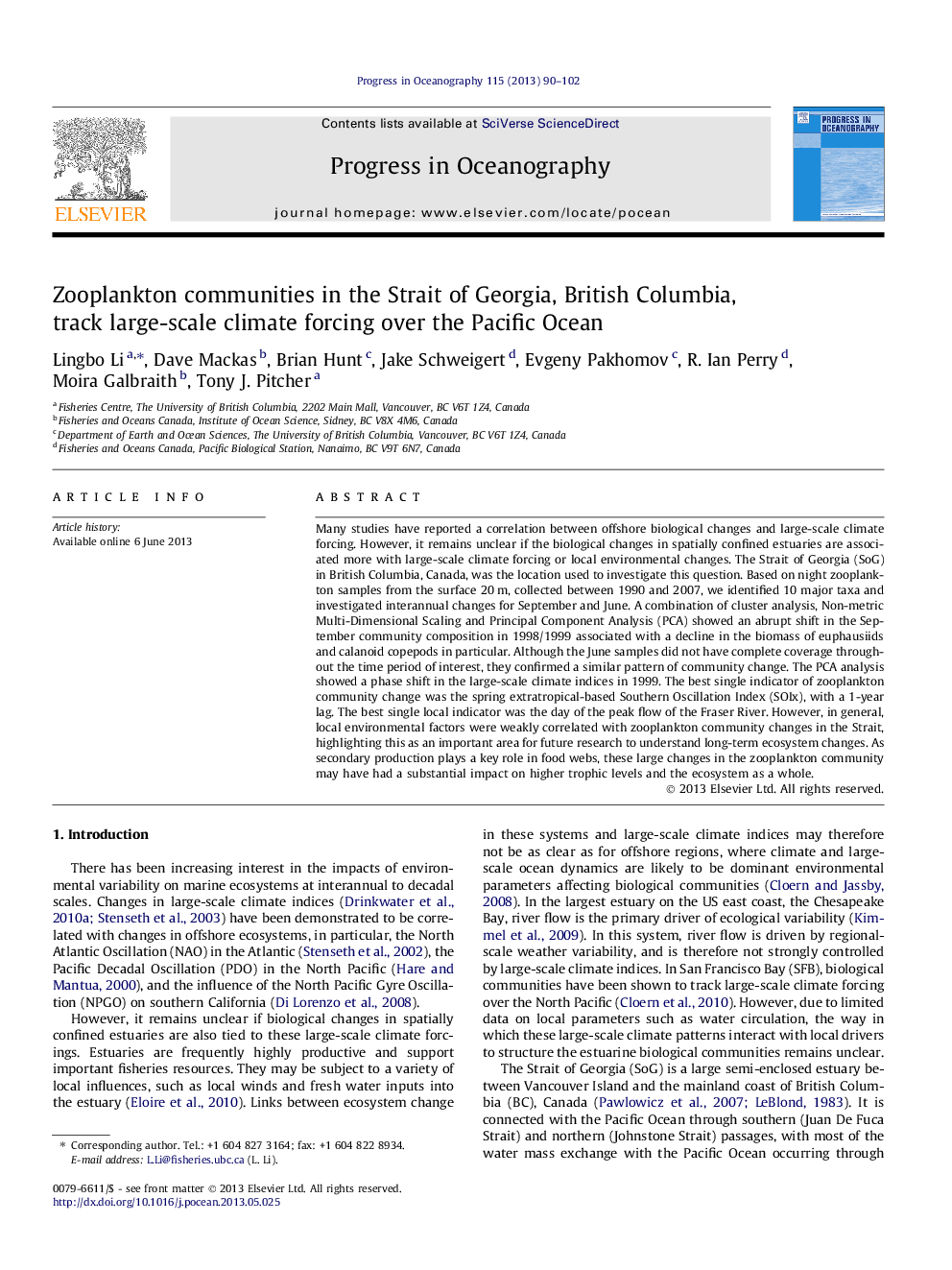| Article ID | Journal | Published Year | Pages | File Type |
|---|---|---|---|---|
| 6388752 | Progress in Oceanography | 2013 | 13 Pages |
Abstract
Many studies have reported a correlation between offshore biological changes and large-scale climate forcing. However, it remains unclear if the biological changes in spatially confined estuaries are associated more with large-scale climate forcing or local environmental changes. The Strait of Georgia (SoG) in British Columbia, Canada, was the location used to investigate this question. Based on night zooplankton samples from the surface 20Â m, collected between 1990 and 2007, we identified 10 major taxa and investigated interannual changes for September and June. A combination of cluster analysis, Non-metric Multi-Dimensional Scaling and Principal Component Analysis (PCA) showed an abrupt shift in the September community composition in 1998/1999 associated with a decline in the biomass of euphausiids and calanoid copepods in particular. Although the June samples did not have complete coverage throughout the time period of interest, they confirmed a similar pattern of community change. The PCA analysis showed a phase shift in the large-scale climate indices in 1999. The best single indicator of zooplankton community change was the spring extratropical-based Southern Oscillation Index (SOIx), with a 1-year lag. The best single local indicator was the day of the peak flow of the Fraser River. However, in general, local environmental factors were weakly correlated with zooplankton community changes in the Strait, highlighting this as an important area for future research to understand long-term ecosystem changes. As secondary production plays a key role in food webs, these large changes in the zooplankton community may have had a substantial impact on higher trophic levels and the ecosystem as a whole.
Related Topics
Physical Sciences and Engineering
Earth and Planetary Sciences
Geology
Authors
Lingbo Li, Dave Mackas, Brian Hunt, Jake Schweigert, Evgeny Pakhomov, R. Ian Perry, Moira Galbraith, Tony J. Pitcher,
